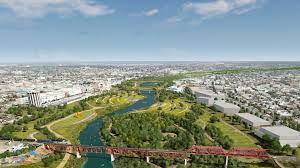What the New Bi-National Park Project Means for Sustainability
Since the early 20th Century, national parks have been established across the United States; and with the mid 70s/early 80s pushing for a revitalization of the parks, national parks have been cemented as a staple of the United States’ fight for green spaces and conservation. The cancelation of the concrete wall contracts by local coalitions like the Texas No Border Wall Coalition, indigenous community members, and climate/immigration activists, and recent news of a bi-national park connecting Laredo, Texas to Nuevo Laredo, Tamaulipas has shown what the future of environmental conservation efforts can look like.
The new project, according to the San Antonio Report, aims to restore the ecosystem of the river as both nations attempt to solve the effluent problem (sewage pollution in the river) that plagues the Rio Grande. The new aims to create a space with biking, art, fiestas, and marketplaces, as well as soccer fields and an amphitheater that will be used by both nations. It would also eliminate the carrizo cane, an invasive species which has damaged the bird and butterfly populations in recent years and has reduced visibility around the border. However, the main purpose of this project aside from environmental factors would be to give families separated by the border a space to reunite.
This example of collaboration amongst two nations in efforts to better and preserve both of their ecosystems and promoting equitable safe spaces to interact, embrace the other’s culture, and teach each other of their land, is an example of what future national parks could look like. I believe this model of collaboration, preservation, and cultural diffusion should be implemented in other borders such as the US-Canada Border, or countries with common environmental problems and/or huge immigration movements. With current information, the bi-national park will show that the fight for a greener world is transboundary, but can start as little as a park rather than transboundary agreement/law. Furthermore, the introduction of bi-national parks as safe spaces for families in high push/pull countries to reunite would help alleviate some of the trauma and pain experienced by immigration and deportation.
Written By Lugardo Marroquin-Cano (‘24)
Source:

